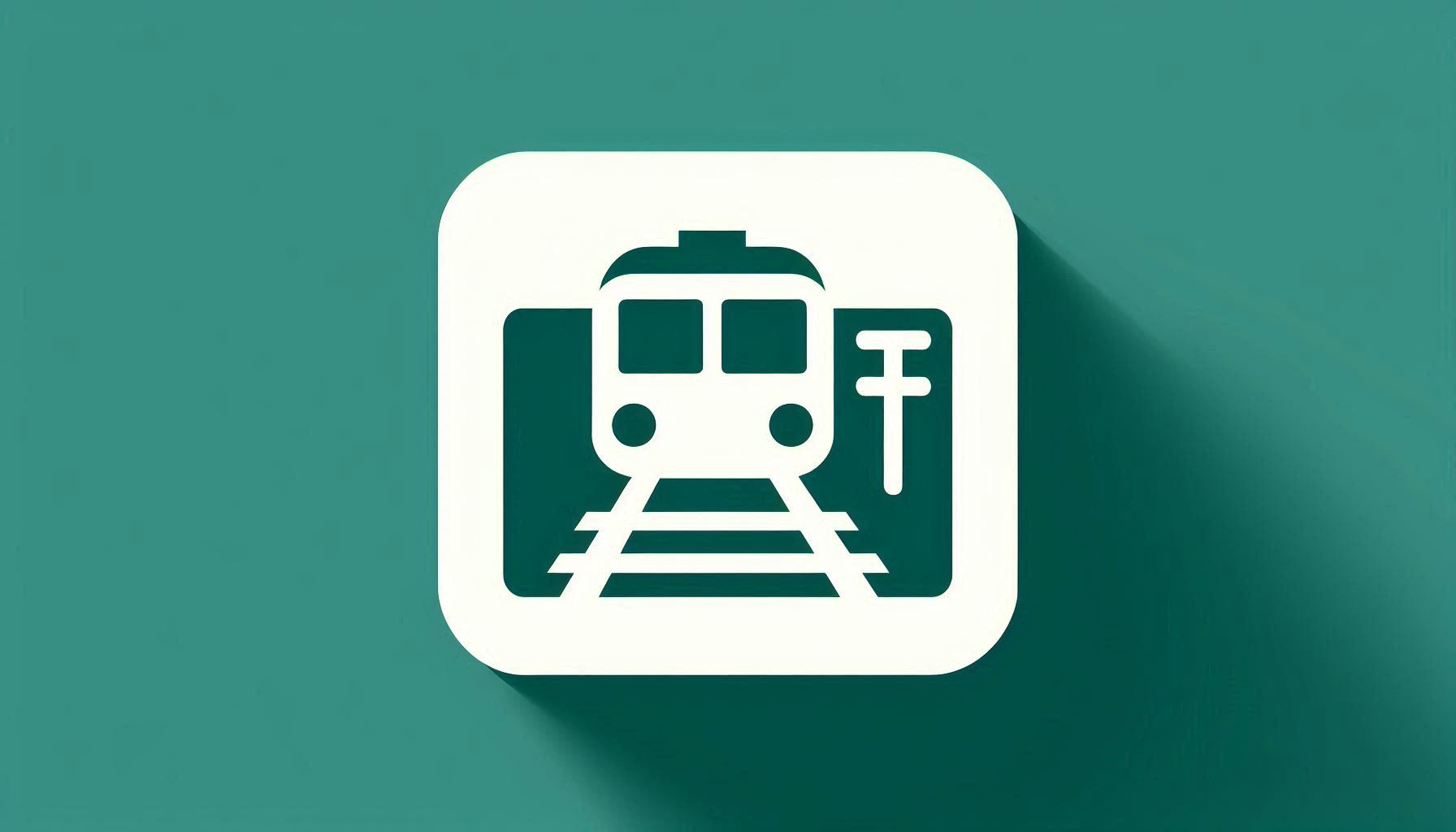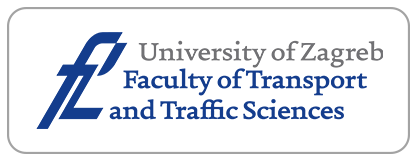Service Quality Evaluation of Transfer Facilities in High-Speed Railway Stations Based on Interval Valued Linguistic Multi-Criteria Decision-Making

Downloads
High-speed railway stations are critical in facilitating seamless connections between different transportation modes. However, challenges such as mismatched transfer capacities, inefficient mode connections and excessive passenger transfer distances and times hinder the efficiency of these stations, impeding overall transport system development. This paper addresses the need for effective evaluation of transfer facility service quality within high-speed railway stations, providing a foundation for optimising these facilities. Leveraging interval-valued linguistic term sets (IVLTSs), this study develops interval-valued linguistic multi-criteria decision-making (IVL-MCDM) methods to assess service quality while accounting for uncertainty in evaluation indicators and attribute weights. We introduce new dominance degrees to enhance the reliability of evaluations, ensuring consistency in assessing transfer facility service quality. The proposed methods are demonstrated through a case study, highlighting their effectiveness and superiority over traditional IVL-MCDM approaches, particularly in maintaining consistent evaluation information.
Downloads
Loo BP, Huang Z. Location matters: High-speed railway (HSR) stations in city evolution. Cities. 2023;139:104380. DOI: 10.1016/j.cities.2023.104380.
Wu S, Han D. Accessibility of high-speed rail (HSR) stations and HSR–air competition: Evidence from China. Transportation Research Part A: Policy and Practice. 2022;166:262-284. DOI: 10.1016/j.tra.2022.10.015.
Kouwenhoven M, et al. New values of time and reliability in passenger transport in the Netherlands. Research in Transportation Economics. 2014;47:37-49. DOI: 10.1016/j.retrec.2014.09.017.
Zhang L, et al. Simulation-based route planning for pedestrian evacuation in metro stations: A case study. Automation in Construction. 2016;71:430-442. DOI: 10.1016/j.autcon.2016.08.031.
Zhang Z, Yao X, Xing Z, Zhou X. Simulation on passenger evacuation of metro train fire in the tunnel. Chaos, Solitons & Fractals. 2024;187:115429. DOI: 10.1016/j.chaos.2024.115429.
Zhang Z, Yao X, Xing Z, Zhou X. Understanding fire combustion characteristics and available safe egress time in underground metro trains: A simulation approach. Chaos, Solitons & Fractals. 2024;187:115434. DOI: 10.1016/j.chaos.2024.115434.
Bezerra GCL, Gomes CF. Measuring airport service quality: A multidimensional approach. Journal of air transport management. 2016;53:85-93. DOI: 10.1016/j.jairtraman.2016.02.001.
Iyer KC, Jain S. Performance measurement of airports using data envelopment analysis: A review of methods and findings. Journal of Air Transport Management. 2019;81:101707. DOI: 10.1016/j.jairtraman.2019.101707.
Subprasom K, Seneviratne PN, Kilpala HK. Cost-based space estimation in passenger terminals. Journal of transportation engineering. 2002;128(2):191-197. DOI: 10.1061/(ASCE)0733-947X(2002)128:2(191).
Mōri M, Tsukaguchi H. A new method for evaluation of level of service in pedestrian facilities. Transportation Research Part A: General. 1987;21(3):223-234.
Diana M. Measuring the satisfaction of multimodal travelers for local transit services in different urban contexts. Transportation Research Part A: Policy and Practice. 2012;46(1):1-11. DOI: 10.1016/j.tra.2011.09.018.
Hoogendoorn SP, Hauser M, Rodrigues N. Applying microscopic pedestrian flow simulation to railway station design evaluation in Lisbon, Portugal. Transportation research record. 2004;1878(1):83-94. DOI: 10.3141/1878-11.
de Abreu e Silva J, Bazrafshan H. User satisfaction of intermodal transfer facilities in Lisbon, Portugal: Analysis with structural equations modeling. Transportation research record. 2013;2350(1):102-110. DOI: 10.3141/2350-12.
Durmisevic S, Sariyildiz S. A systematic quality assessment of underground spaces–Public transport stations. Cities. 2001;18(1):13-23. DOI: 10.1016/S0264-2751(00)00050-0.
Kim J, et al. Service quality evaluation for urban rail transfer facilities with Rasch analysis. Travel Behaviour and Society. 2018;13:26-35. DOI: 10.1016/j.tbs.2018.05.002.
Chen X, et al. Integrated optimization of transfer station selection and train timetables for road–rail intermodal transport network. Computers & industrial engineering. 2022;165:107929. DOI: 10.1016/j.cie.2021.107929.
Kaveh F, et al. A new bi-objective model of the urban public transportation hub network design under uncertainty. Annals of Operations Research. 2021;296:131-162. DOI: 10.1007/s10479-019-03430-9.
Wang W, et al. A network-based model of passenger transfer flow between bus and metro: An application to the public transport system of Beijing. Journal of advanced transportation. 2020. 2020:1-12. DOI: 10.1155/2020/6659931.
Paulsen M, Rasmussen TK, Nielsen OA. Impacts of real-time information levels in public transport: A large-scale case study using an adaptive passenger path choice model. Transportation Research Part A: Policy and Practice. 2021;148:155-182. DOI: 10.1016/j.tra.2021.03.011.
Zhang L, Yang Z, Li T. Group decision making with incomplete interval-valued linguistic intuitionistic fuzzy preference relations. Information Sciences. 2023;647:119451. DOI: 10.1016/j.ins.2023.119451.
Lin M, Xu Z, Zhai Y, Yao Z. Multi-attribute group decision-making under probabilistic uncertain linguistic environment. Journal of the Operational Research Society. 2018;69(2):157-170. DOI: 10.1057/s41274-017-0182-y.
Bai C, et al. Interval‐valued probabilistic linguistic term sets in multi‐criteria group decision making. International Journal of Intelligent Systems. 2018;33(6):1301-1321. DOI: 10.1002/int.21983.
Jin C, Wang H, Xu Z. Uncertain probabilistic linguistic term sets in group decision making. International Journal of Fuzzy Systems. 2019;21:1241-1258. DOI: 10.1007/s40815-019-00619-9.
Yin X, Zhang Z. Multiplicative consistent q-Rung orthopair fuzzy preference relations with application to critical factor analysis in crowdsourcing task recommendation. Axioms. 2023;12(12):1122. DOI: 10.3390/axioms12121122.
Zhang Z, et al. Incomplete pythagorean fuzzy preference relation for subway station safety management during COVID-19 pandemic. Expert Systems with Applications. 2023;216:119445. DOI: 10.1016/j.eswa.2022.119445.
Zhang Z, et al. Additive consistency of q-rung orthopair fuzzy preference relations with application to risk analysis. Journal of Intelligent & Fuzzy Systems. 2023;44(4):6939-6955. DOI: 10.3233/JIFS-221859.
Meng F, An Q, Chen X. A consistency and consensus-based method to group decision making with interval linguistic preference relations. Journal of the Operational Research Society. 2016;67:1419-1437. DOI: 10.1057/jors.2016.28.
Meng F, Tang J, Zhang S. Interval linguistic fuzzy decision making in perspective of preference relations. Technological and Economic Development of Economy. 2019;25(5):998-1015. DOI: 10.3846/tede.2019.10548.
Feng X, Pang X, Zhang L. On consistency and priority weights for interval probabilistic linguistic preference relations. Fuzzy Optimization and Decision Making. 2020;19:529-560. DOI: 10.1007/s10700-020-09328-7.
Wu X, Liao H, Pedrycz W. Probabilistic linguistic term set with interval uncertainty. IEEE Transactions on Fuzzy Systems. 2020;29(11):3532-3545. DOI: 10.1109/TFUZZ.2020.3025699.
Al Salem AA, Awasthi A. Investigating rank reversal in reciprocal fuzzy preference relation based on additive consistency: causes and solutions. Computers & Industrial Engineering. 2018;115:573-581. DOI: 10.1016/j.cie.2017.11.027.
Liu F, Peng YN, Yu Q, Zhao H. A decision-making model based on interval additive reciprocal matrices with additive approximation-consistency. Information Sciences. 2018;422:161-176. DOI: 10.1016/j.ins.2017.09.014.
Lan J, Zou H, Hu M. Dominance degrees for intervals and their application in multiple attribute decision-making. Fuzzy Sets and Systems. 2020;383:146-164. DOI: 10.1016/j.fss.2019.07.001.
Zhang Z, Zhang H, Zhou L. Zero-carbon measure prioritization for sustainable freight transport using interval 2 tuple linguistic decision approaches. Applied Soft Computing. 2023;132:109864. DOI: 10.1016/j.asoc.2022.109864.
Chen T, et al. Timetable optimization of high-speed railway hub based on passenger transfer. Journal of Intelligent & Fuzzy Systems. 2020;38(5):5743-5752. DOI: 10.3233/JIFS-179662.
Khan MSA, et al. Linguistic interval-valued q-Rung orthopair fuzzy TOPSIS method for decision making problem with incomplete weight. Journal of Intelligent & Fuzzy Systems. 2021;40(3):4223-4235. DOI: 10.3233/JIFS-200845.
Gurmani SH, Chen H, Bai Y. The operational properties of linguistic interval valued q-Rung orthopair fuzzy information and its VIKOR model for multi-attribute group decision making. Journal of Intelligent & Fuzzy Systems. 2021;41(6):7063-7079. DOI: 10.3233/JIFS-210940.
Zindani D, Maity SR, Bhowmik S. Complex interval-valued intuitionistic fuzzy TODIM approach and its application to group decision making. Journal of Ambient Intelligence and Humanized Computing. 2021;12:2079-2102. DOI: 10.1007/s12652-020-02308-0.
Chen TY. IVIF-PROMETHEE outranking methods for multiple criteria decision analysis based on interval-valued intuitionistic fuzzy sets. Fuzzy Optimization and Decision Making. 2015;14:173-198. DOI: 10.1007/s10700-014-9195-z.
Copyright (c) 2025 Shang WU, Shaozhi HONG, Zeling WANG, Zhiyuan SHI, Jiayu ZANG

This work is licensed under a Creative Commons Attribution-NonCommercial 4.0 International License.




















